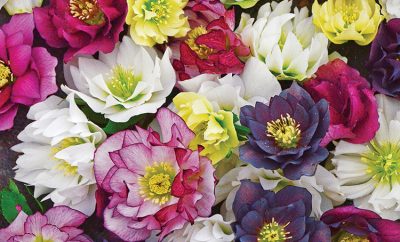How to Cultivate Moth Orchids
Moth orchids, also known as phalaenopsis orchids, are the most popular flowering plant in the world. Thought to look like moths in flight, phalaenopsis literally translates to “moth-like” orchid, and they have been around since dinosaurs roamed the earth.

Photo Credit: istock/Viktoria Ermakova
If you buy a moth orchid that still has plenty of buds, you can expect for it to bloom for two to six months – quite a bargain, when compared to cut flowers. These moth orchids come in a variety of colors, including white, purple, pink, salmon, yellow or even speckled or blotch-patterned. You might even discover blue moth orchids, which is one of the man-made gemstone colors. Gemstone colors were created in Holland specifically for orchids by making a small hole in the stem and injecting dye into the hole, which is then covered with wax. The blooms change color within 24 hours, although reverts to its original color with the next bloom.
Moth orchids used to be very expensive but are much more accessible and affordable now that they are grown from tissue in European labs, where millions are produced yearly.
Care Instructions
Phalaenopsis are easy to grow and, with the right care, can bloom for years. If you decide you want to grow your own instead of buying, here are some things you need to know:
- Light: Give them indirect muted sunlight. Full sun will scorch and burn marks will appear on leaves. If your plant doesn’t rebloom, it may not have enough light.
- Temperature: Keep temperature at 65 to 85 degrees with like humidity. Avoid drafts.
- Root care: In their tropical home, this epiphytic plant doesn’t need soil because it obtains nutrients and water from the air while attached to branches or trees; however, your plant will be potted in a bark mixture. Tendril-like aerial roots will grow out of the pot looking for water and nutrients. Do not cut them off, as it is harmful to orchid.
- Water: Water every six to eight days. Every other time, water with half-strength water-soluble orchid fertilizer. Do not water from above, as water on the crown will cause the crown to rot. Do not mist or attempt to water with ice cubes, as this has a negative impact on the plant. To properly water your orchid, take it out of the plastic container, water it, then allow to drain well.
- Potting: Make sure that your pot has several drain holes in the bottom. Add some holes on the side of the pot to ensure that the roots get enough air.
- Stem: Phalaenopsis use a stake to keep the bloom stem upright. In its tropical habitat, the bloom hangs down from the plant like a vine. After blooming, the stem turns brown. When this happens, cut it off at a 45-degree angle, right at the base, above a node. Treat the wound with cinnamon.
- Repotting: Repot once a year. To do this, clean off all bark material from the roots, flushing them get rid of old material. Check the roots, removing any dead ones and repot using new orchid potting material.













 My Indiana Home is produced for Indiana Farm Bureau members. Our mission is to connect you with the food you eat, the Indiana farmers who grow it and a rural lifestyle that is uniquely Hoosier.
My Indiana Home is produced for Indiana Farm Bureau members. Our mission is to connect you with the food you eat, the Indiana farmers who grow it and a rural lifestyle that is uniquely Hoosier.
Leave a Comment